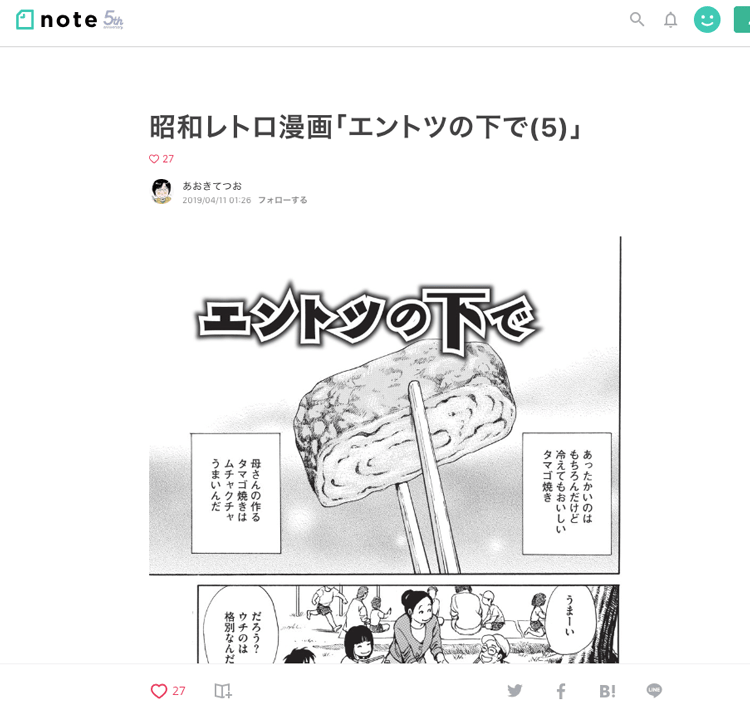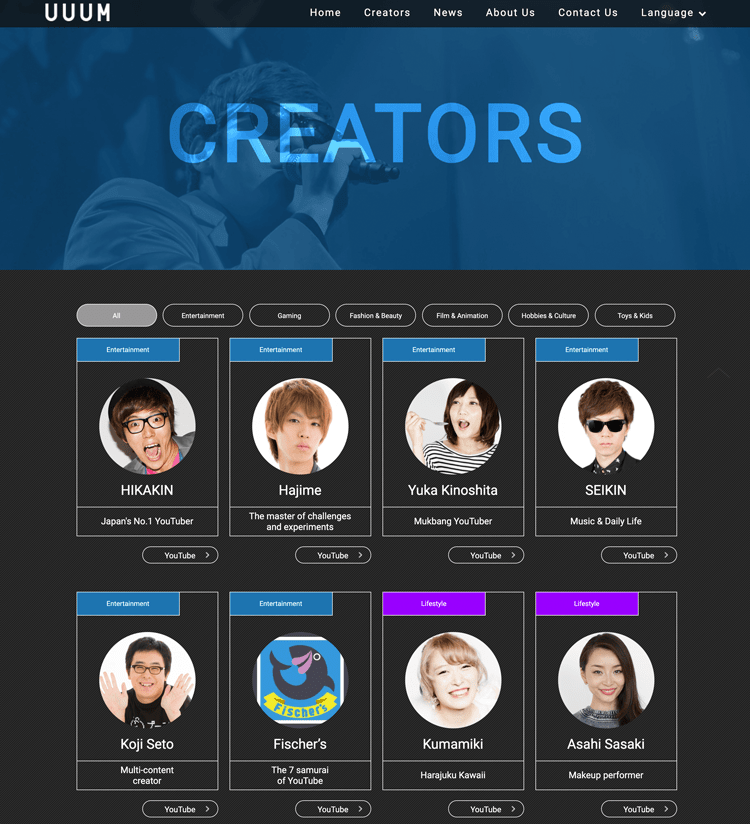
Btrax Design Company > Freshtrax > 5 Facts You Sho...
5 Facts You Should Know Before You Tap Into Influencer Marketing in Japan
Influencer marketing plays an integral part in many companies’ marketing strategy and there is no exception for the Japanese market. Influencer marketing is pretty big in Japan but the rules are quite different from the ones in the U.S. or English-speaking countries. I would like to share 5 unique facts about influencer marketing in Japan based on my hands-on experience working with influencers and bloggers on behalf of global brands in the past few years.
1. The Language Barrier
Japan’s English Proficiency is Low
One of the most unique aspects of the social media and influencer marketing landscape in Japan is the language barrier. Japan is positioned 49th out of 88 counties and regions in the English language skill rankings conducted by EF English Proficiency Index, which is considered “low proficiency” in English. Also, according to a research study conducted by Rakuten Insight, 69.6% of Japanese people think they are not good at English.

Japan is positioned 49th in EF English Proficiency Index
Global influencers are not as influential
Because of the low English proficiency of Japanese people, English-speaking influencers are not as influential in Japan as they are in the English-speaking countries. One of the global brands that I worked for before partnered with top tier influencers for their global campaigns. They earned great engagements from customers in the English-speaking countries but not so much in Japan. These influencers were not even known in the Japanese market.
Fully localize or ignore the market?
So what should we do? Should we localize the influencer campaigns by hiring local influencers? Or should we just ignore the Japanese market? That’s the dilemma that many global companies have. If Japan had a huge population and its economy was growing like China, sure, there is no reason not to cater the campaigns for the Japanese market. The reality is, the household disposable income has been decreasing since the mid-1990s. And the median annual salary of Japanese workers was 3.7M yen in 2015 ($33K in USD at a rate of 111 JPY = 1 USD), which is about a half of the median household income in the US. ($61K in 2017). The Japanese market is not as lucrative as the Chinese market, but still, Japan is ranked 3rd in the World GDP ranking, which is too big to completely ignore.
Japanese influencers have fewer followers
OK, now I assume that you have decided to localize the influencer campaigns by hiring local influencers. You will notice that their number of followers is 1 or 2 digits smaller than what global influencers have. It’s the same reason as English-speaking influencers are not influential among Japanese people. Japanese influencers are not influential among the English-speaking audience because most of them communicate in Japanese.
What you need to understand is their engagement, rather than a number of followers. At some point, you will need to explain to your boss or investors why you are working with these Japanese local influencers who have fewer followers than global influencers. So you have to be ready to explain how influential these influencers are among your target audience in Japan. That can be simply measured by engagement rate or you might need to look into conversations with followers to get more insights.
2. Japanese Hashtags
Unique hashtags require the cultural background
In relation to the language barrier, we need to understand the uniqueness of Japanese hashtags. Finding the right hashtags and using them properly is extremely important in finding the community that you want to approach and engage with. Influencers, especially micro-influencers can be discovered in the community formed around the hashtags. However, finding the right Japanese hashtag is not so easy for non-Japanese speakers. Here are some popular Japanese hashtags:
#おしゃれさんと繋がりたい (Oshare-san-to-trsunagari-tai) [Fashion]
#外国人風カラー (Gaikokuzin-fu-color) [Hair Styles]
#花のある生活 (Hana-no-aru-seikatsu) [Flowers]
#犬バカばんざい倶楽部 (Inubaka-banzai-club) [Dogs]
#おうちごはん (Ouchi-gohan) [Cooking]
#インク沼 (Inku-numa) [Inks]
Interestingly, these popular hashtags are neologisms. For example, the direct translation of the top hashtag #おしゃれさんと繋がりたい (Oshare-san-to-tsunagari-tai) is “I want to connect with fashionistas.” It’s really straight forward. How about the last one, #インク沼? It’s direct translation is “Bottomless swamp of ink.” What? The phrase “Bottomless swamp of something” is Japanese internet slang that describes the situation where people are extremely into something. #インク沼 does not make sense unless you know the cultural background.

instagram posts with #インク沼 hashtag (Photo credit @salty_f, @sayaya0609, @moririn.fuurin.penmanship )
Combination of Kanji, Hiragana, and Katakana
Another cause making Japanese hashtag more complicated to understand is the combination of Kanji, Hiragana, and Katakana. In the Japanese language, there are 3 different types of characters: Kanji, Hiragana, and Katakana.
Kanji, or Chinese characters, is an ideographic writing system, which means each character represents a concept or an idea. For example, the Kanji of Tokyo(東京)means east capital. This is because Kyoto used to be the main capital of Japan and Tokyo was the second capital located east of Kyoto.
Hiragana and Katakana are syllabic writing, which means each character represents a syllable such as “to” or “u”. They’re purely phonetic so they don’t have direct connotations as Kanji does. Any Kanji can be written in Hiragana. Katakana is usually used for loanwords and onomatopoeia.
So when you use Japanese hashtags, you really need to be careful about how the hashtag is written, whether it’s in Kanji or Hiragana or Katakana or a combination of these as these can change the meaning.
Let’s take the hashtag, #おしゃれさんと繋がりたい at an example. The word “おしゃれさん”, meaning fashionista, can be written in Kanji or Hiragana or Katakana, like “お洒落さん” and “オシャレさん”. Even though they all mean the same, most of the social media platforms consider them as different hashtags. While the hashtag written in hiragana, #おしゃれさんと繋がりたい has 8M posts, the hashtag written in Katakana, “#オシャレさんと繋がりたい” has 1.5M posts, and the hashtag written in Kanji, “#お洒落さんと繋がりたい” only has19K posts. That being said, if you use the wrong spelling, your potential reach will can be much smaller.
3. Influencers are Scattered Across Platforms
It’s very rare that an influencer has a strong influence on all of the popular social media channels. Most of them are popular on a single social media platform. This is because each social media platform offers different ways of communication. For example, Instagram is the place for visual communication with perfect photos while Twitter is a text-based communication platform.
Unique social media platforms for specific content categories
Also, each category of content has suitable social platforms for content distribution. Here are some examples of unique social media platforms that are suitable for specific content categories in Japan:
NewsPicks [Business]
Users pick up news and leave comments on NewsPicks. Business professionals use this social media platform to share their opinions in regard to news topics they pick from their professional viewpoint.
TikTok [Teen culture, entertainment]
TikTok is a short video clip sharing app that is extremely popular among teenagers. Teen trends start from here.
note [Creative content]
note is a social media platform for content creators. note helps creators make money out of their content – mainly reading content. The contents sold on note include but are not limited to: Novels, how-tows, columns, and manga.

note: The social media platform for contents creators.
4. Top-tier Influencers Belong to Agencies
Once Japanese influencers are becoming popular, they tend to belong to management agencies. There are very few influencers who work as “freelancers.” Agencies manage multiple influencers in different categories. If you want to work with an influencer who belongs to an agency, you need to contact the agency first. That means you can’t directly work or negotiate with the influencer. Here are some pros and cons of working with agencies.

UUUM: One of the leading influencer management agencies in Japan
Pros:
- You can get access to the most powerful influencers at once
- Save time to find the right influencers. Agencies usually help you find the ones for you
- The agency will take care of negotiation of deals and contracts
Using an agency is beneficial especially when you are not familiar with the influencer landscape in your target market or when you don’t have any connection with the influencers.
Cons:
- Extra costs for management fees
- You will have less flexibility on your collaboration project
- Usually, you can’t get the contact information of influencers. (You can’t build your own network)
Since you are using a middleman, the total cost will be higher than working directly with influencers. Also, each agency has guidelines and rules regarding collaborations, so you will have less flexibility in your projects.
5. Strong Dislike Against Non-Disclosed Sponsorship
Japanese consumers are strict about non-disclosed paid-partnerships with brands. Since fake reviews were a big social concern and resulted in lawsuits in Japan in the past, people are skeptical about stealth marketing, or non-disclosed sponsorship.
Your non-disclosed paid posts are not only ignored by Japanese customers, but they also give consumers bad impressions. However, there are no direct laws to regulate the disclosure of sponsored posts by influencers in Japan (as of March 2019). Also, not all of the influencers are aware of the right way to disclose sponsorship.
So, it’s important for the brands to educate influencers. Also, make sure not to work with random influencers to just get as many impressions as possible. In the United States, we have clear guidelines for influencer marketing determined by the Federal Trade Commission. You should follow their guidelines until a Japanese one is established.
The picture below is an example of a typical bad non-disclosed sponsorship. These random influencers posted a picture of shower head simultaneously even though their regular posts are not related to the shower head at all. It was so unnatural and so obvious to customers that influencers were getting paid for posting images with the shower head. Consumers are not naive or stupid. They will immediately know these posts are “commercials.”

One example of a non-disclosed sponsorship
#######
I hope you by now have a better idea of the influencer landscape in Japan. Entering into a new market, especially the countries/regions where a different language is spoken requires a lot of learning. Of course, you can do everything in-house through trial and error. But partnering with market expansion pros (like us!) might speed up your market expansion before your competitors do. We at btrax offer Japan market entry support from market research to UX localization and user acquisition strategy. Contact us to learn how we can work together to make your business expansion in Japan successful. We look forward to working with you!
If you enjoyed this article, sign up for our newsletter and receive exclusive updates on our latest freshtrax articles and more!







